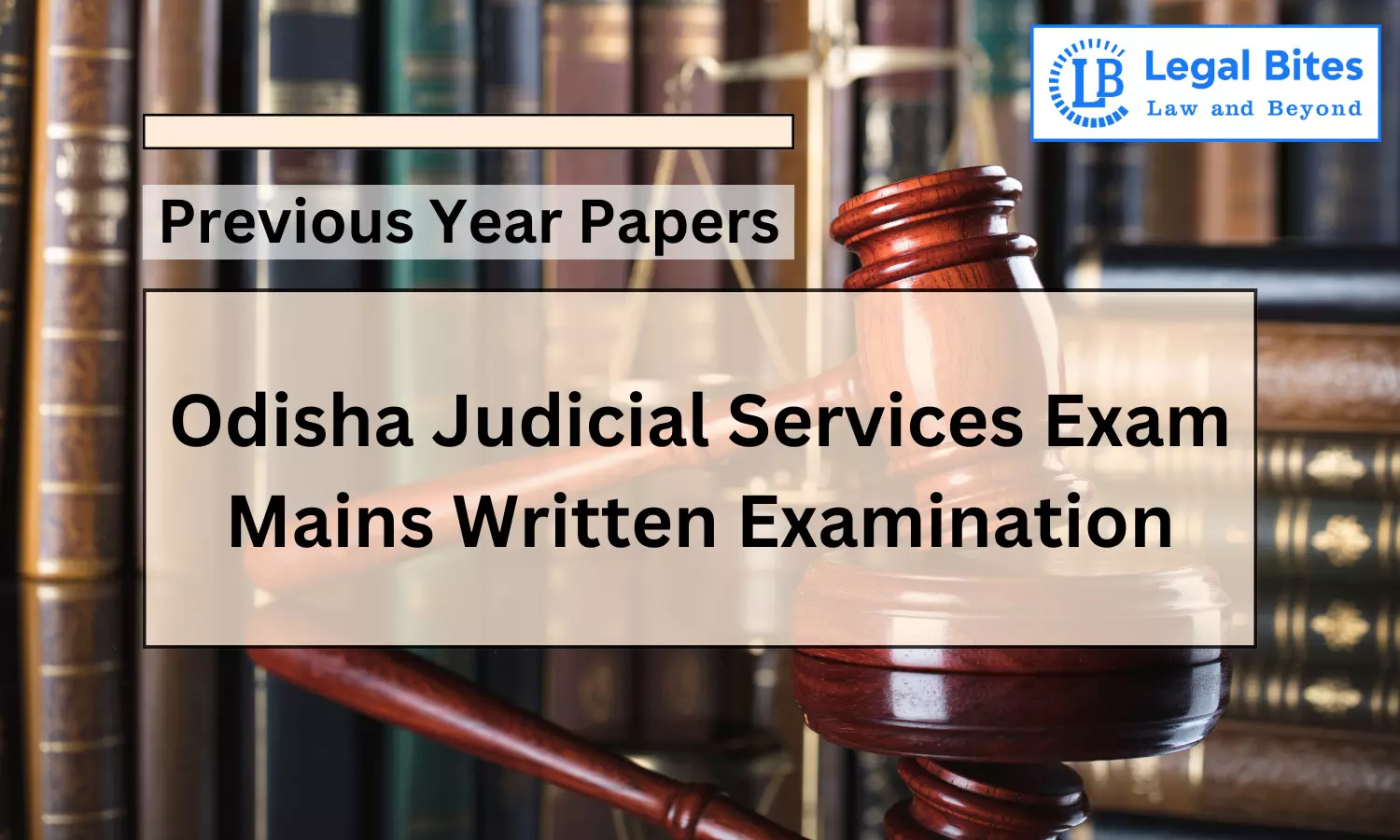Odisha Judicial Services Exam Mains 2018 Optional Paper - II | Personal Law
Candidates preparing for Odisha Judicial Services Exam should solve the Odisha Judicial Services Exam Mains 2018 Optional Paper - II (Personal Law)

Candidates preparing for the Odisha Judicial Services Exam should solve the Odisha Judicial Services Mains 2018 Optional Paper - II (Personal Law) and other previous years' question papers as part of their preparation for the Prelims and Mains. Practicing these papers helps aspirants understand the syllabus better and prepare strategically by focusing on the types of questions previously asked. Successful candidates are always aware of the question patterns and techniques employed by the Odisha Judiciary Examination. Every aspirant should adopt this approach at the start of their preparation to gain a comprehensive understanding of the examination pattern and question design.
Odisha Judicial Services Exam Mains 2018 Optional Paper- II | Personal Law
Practicing authentic question papers gives candidates a real sense of the exam pattern and question style. Below is the Odisha Judicial Services Mains 2018 Optional Paper - II | Personal Law. Strengthen your preparation with our Odisha Judiciary Mains Mock Test Series. | SPONSORED
Odisha Judicial Services Main Written Examination 2018
Optional Paper-II (Personal Law)
Optional Paper-II (Personal Law)
Maximum Marks: 150
Specific Instructions:
The figures in the right-hand margin indicate Marks.
Answer six questions, selecting three questions from each Section.
All questions carry equal marks.
Section-A
Question 1
According to Manu there are four sources of Dharma. Discuss the main sources of Hindu Law in detail. (25 Marks)
Question 2
Under the textual Hindu Law, three conditions were required for a valid marriage i. e. identify the caste, prohibited degrees of relationship and ceremonies of marriage. What are the essential conditions for marriage under the Hindu Marriage Act, 1955? Explain. (25 Marks)
Question 3
Mere severance of all connections with wife because of his ill health and allowing her to remarry cannot amount to divorce within the meaning of Section 13 of the Hindu Marriage Act, 1955, because a decree of divorce which result in the dissolution of a solemnized marriage has to be obtained by one of the two parties on presentation of a petition from a competent court. Discuss the grounds on which divorce can be available to husband and wife both. Do you agree that certain additional grounds are available to wife only? Explain. (25 Marks)
Question 4
Discuss the requisites of a valid adoption under the Hindu Adoption and Maintenance Act, 1956. A, a Hindu male of 25 years of age adopted a daughter of 14 years of age. Discuss the validity of such adoption. Is it makes any difference if the adopted child is a son of 14 years of age. Explain. (25 Marks)
Question 5
Who are the heirs of a Hindu Female? Discuss the provisions relating to rules of succession of the property of a Hindu female dying intestate under the Hindu Succession Act, 1956. (25 Marks)
Question 6
Explain any four of the following: (25 Marks)
(a) Distinction between Void and Voidable Marriage.
(b) Distinction between Alimony and Maintenance pendente lite.
(c) Distinction between Joint Hindu Family and Coparcenary.
(d) Difference between the Mitakshara and Dayabhaga Schools.
(e) Difference between the powers of a Natural guardian and a Testamentary guardian.
(f) Difference between Perstripes and Per capita distribution.
Section - B
Question 7
Sunni Muslims of India belong either to the Hanafi or Shafi school of Muslim law but there are other schools of Muslim law too. Discuss the schools of Sunni Muslim Law in detail. (25 Marks)
Question 8
The fact is that Maher(dower) is neither consideration nor dowry. It has a unique position of its own. What is dower? Discuss the nature, amount, claim of Maher and Maher when payable. (25 Marks)
Question 9
The fact is that Mahr(dower) is neither consideration nor dowry. It has a unique position of its own. What is dower? Discuss the nature, amount, claim of Maher and Maher when payable. (25 Marks)
Question 10
The dissolution of Muslim Marriage Act, 1939 was enacted in the erstwhile British India at the end of a long pro-women reform movement led by Muslim religious leaders. Explain the various grounds on which the court can dissolve a marriage at the Instance of the wife. (25 Marks)
Question 11
With the help of the decided cases discuss the provisions of Muslim Women (Protection of Rights on Divorce) Act, 1986. (25 Marks)
Question 12
Write explanatory notes on any two of the following: (25 Marks)
(a) Triple Talaq
(b) Essentials of Hiba
(c) Doctrine of Aul and Rudd
(d) Bequenthable third

